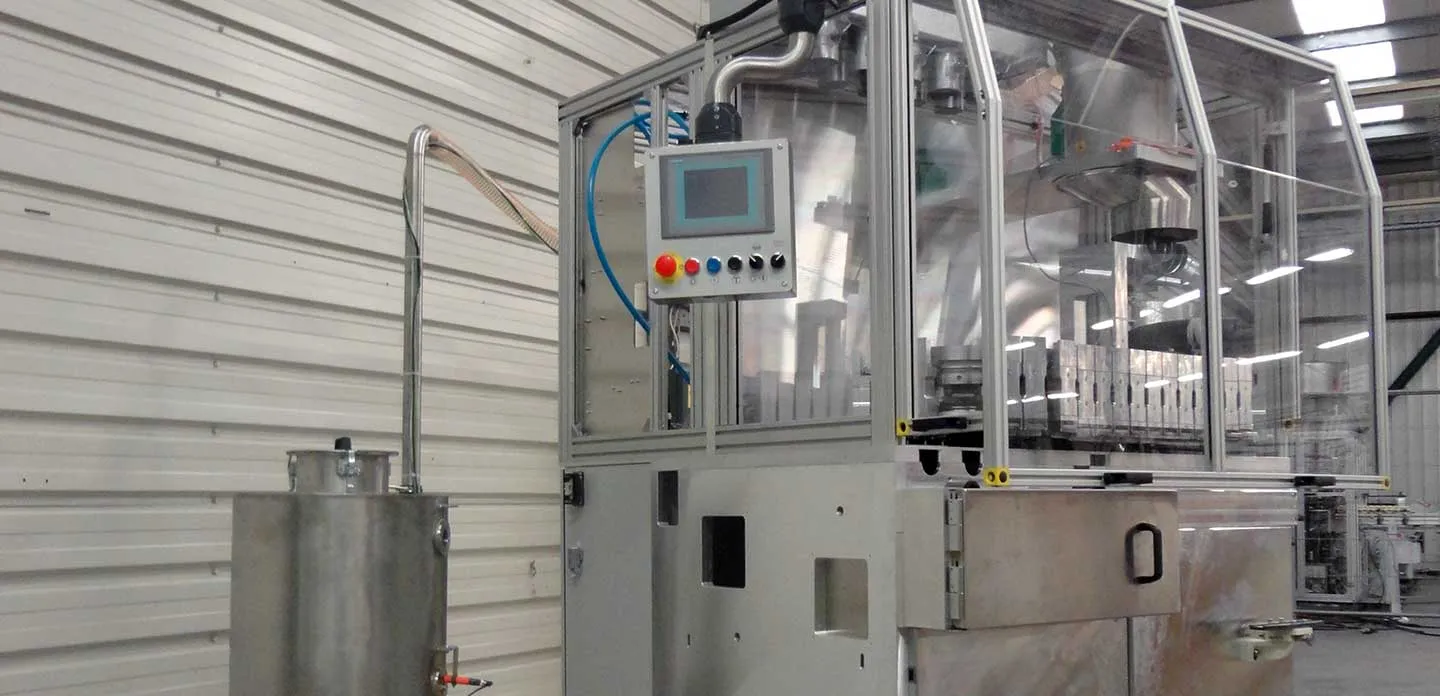Aiger Engineering Ltd. designs, engineers, manufactures, and installs high-precision production systems. Based in Bulgaria, Aiger Engineering is part of the Aiger Group AG, an international group of engineering companies focused on developing innovative products and technologies that improve production processes. For more than 20 years, the company’s experienced team of electrical, mechanical, and software engineers has delivered numerous new technologies and production processes in the pharmaceutical and tobacco industries. As an integrated solutions provider, Aiger delivers everything from initial product and process development to production and project management to onsite installation and support. With substantial technical challenges—like installing flavor capsules at a rate of 14,000 per minute—Aiger relies on advanced 3D design and engineering tools to develop new products and innovative approaches. “It’s extremely important for us to operate in a high-technology, professional environment,” explains Executive Manager Dimitar Yanchev. “That’s why we were an early adopter of 3D design technology when we standardized on SOLIDWORKS mechanical design software.” Since moving from AutoCAD® 2D design tools to SOLIDWORKS 3D development software in 1998, Aiger has acquired additional SOLIDWORKS solutions to meet emerging needs. Today, the company utilizes 28 licenses of SOLIDWORKS Standard design, one of SOLIDWORKS Professional design, one of SOLIDWORKS Premium design, one of SOLIDWORKS Composer™ technical communication, and 32 of SOLIDWORKS Enterprise PDM (EPDM) product data management software licenses.
In 2013, Aiger sought better integration between electrical and mechanical design than was possible with the EPLAN electrical design software it had used. “We continually strive to shorten lead-times, improve quality, and increase innovation,” Yanchev stresses. “As our machines become increasingly more complex, we need to integrate electrical and mechanical design into a single, unified workflow.” To achieve this integration, the machine manufacturer added SOLIDWORKS Electrical Professional 3D electrical design software. Aiger chose SOLIDWORKS Electrical software because it is easy to use, fully integrates with SOLIDWORKS mechanical design and PDM software solutions, and supports a unified approach to machine development. “Our machines include roughly 50 percent mechanical and 50 percent electrical parts,” Yanchev notes. “We believed that developing each aspect separately not only added time to our development cycles, it also created potential for errors and prevented collaboration between our electrical and mechanical designers.”
INTEGRATING ELECTRICAL AND MECHANICAL DESIGN
Upon implementing SOLIDWORKS Electrical Professional software, Aiger initiated a pilot project to better understand the efficiency impact of integrating electrical and mechanical design. “Normally, electrical designers don’t like to work in the mechanical world and mechanical designers don’t want to deal with schematics,” Yanchev points out. “As a company, it was important for us to have all of our designers on a single development platform. Once our engineers used the software, they experienced the benefits themselves and realized that integrating electrical and mechanical design is a better, smarter way to work. “There’s more collaboration,” Yanchev continues. “For example, because electrical and mechanical designers work within the same SOLIDWORKS assembly, our electrical designers have more input into how designs affect the routing of wires and cables. They can now develop control panels and cabinets with an eye toward routing, which they couldn’t really do before, and our mechanical designers gain a better understanding of how the systems work together.”
